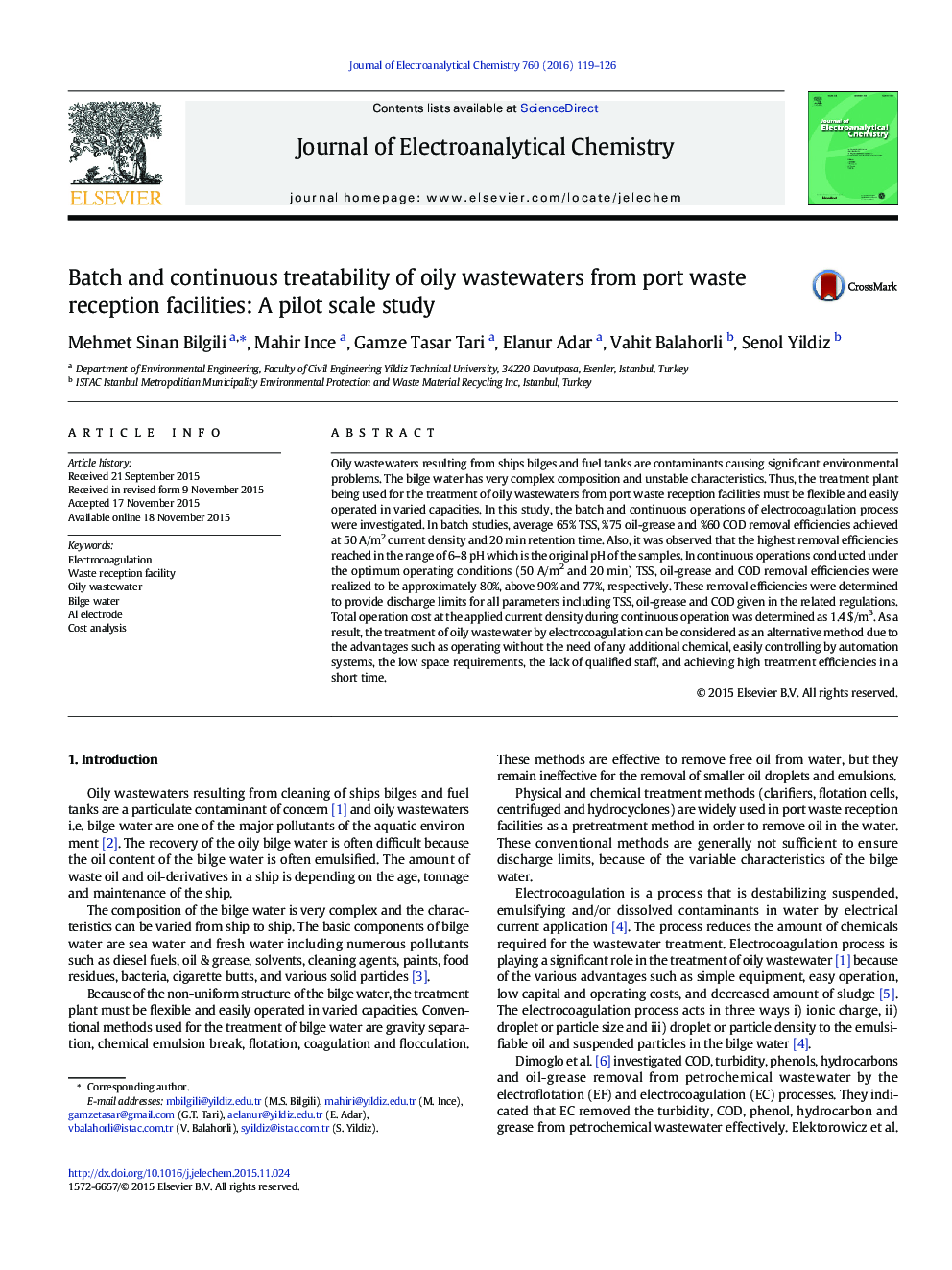| Article ID | Journal | Published Year | Pages | File Type |
|---|---|---|---|---|
| 217931 | Journal of Electroanalytical Chemistry | 2016 | 8 Pages |
•Pilot scale investigation of the treatment of oily wastewater by electrocoagulation•Optimization of the process by batch and continuous applications•Cost analysis of the process for the full-scale applications
ABSTRACTOily wastewaters resulting from ships bilges and fuel tanks are contaminants causing significant environmental problems. The bilge water has very complex composition and unstable characteristics. Thus, the treatment plant being used for the treatment of oily wastewaters from port waste reception facilities must be flexible and easily operated in varied capacities. In this study, the batch and continuous operations of electrocoagulation process were investigated. In batch studies, average 65% TSS, %75 oil-grease and %60 COD removal efficiencies achieved at 50 A/m2 current density and 20 min retention time. Also, it was observed that the highest removal efficiencies reached in the range of 6–8 pH which is the original pH of the samples. In continuous operations conducted under the optimum operating conditions (50 A/m2 and 20 min) TSS, oil-grease and COD removal efficiencies were realized to be approximately 80%, above 90% and 77%, respectively. These removal efficiencies were determined to provide discharge limits for all parameters including TSS, oil-grease and COD given in the related regulations. Total operation cost at the applied current density during continuous operation was determined as 1.4 $/m3. As a result, the treatment of oily wastewater by electrocoagulation can be considered as an alternative method due to the advantages such as operating without the need of any additional chemical, easily controlling by automation systems, the low space requirements, the lack of qualified staff, and achieving high treatment efficiencies in a short time.
